
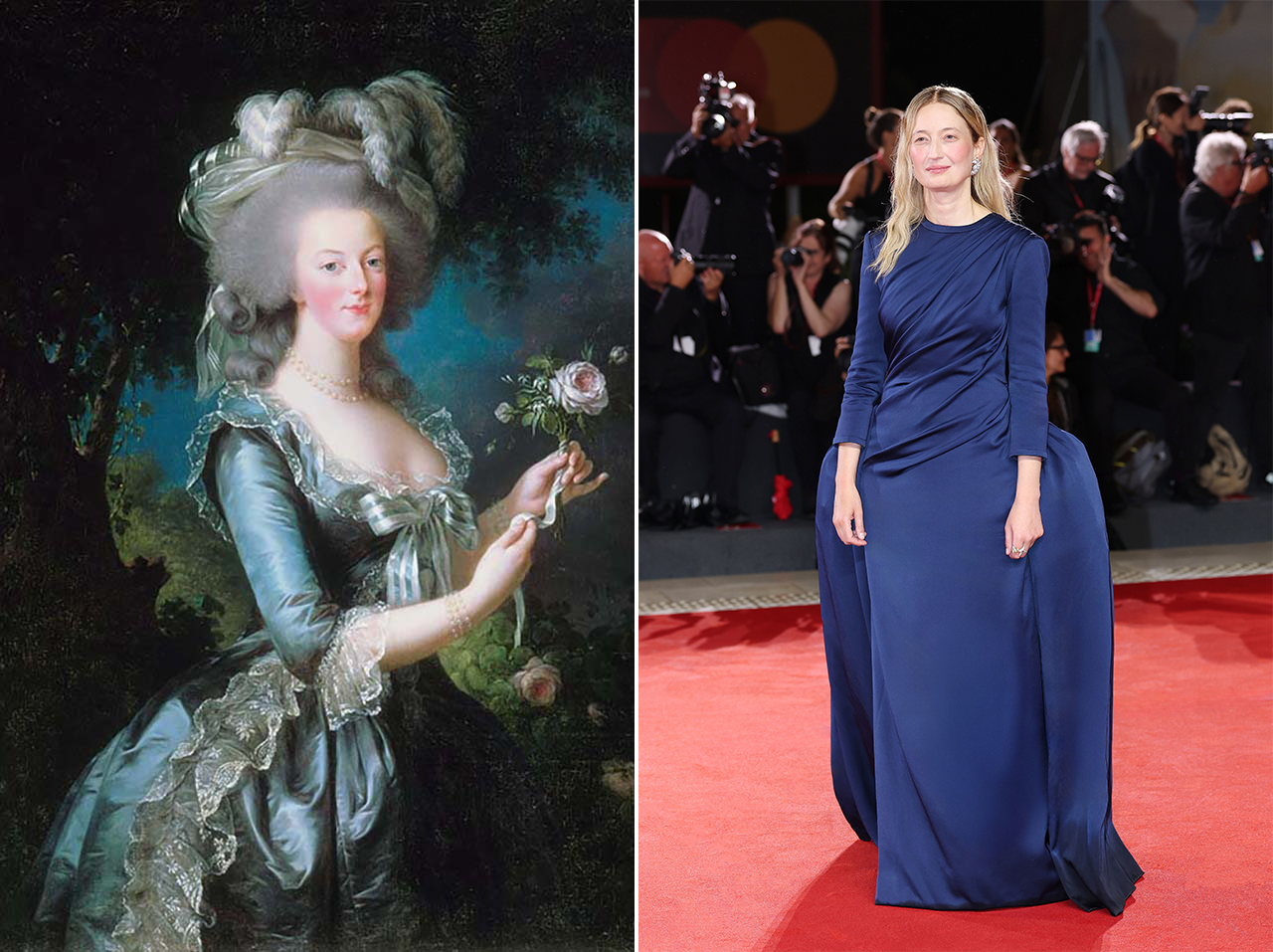
Photo: Courtesy of Dior
“She is the original influencer,” says Dr. Sarah Grant, curator of Marie Antoinette Style at London’s Victoria & Albert Museum. The exhibit, on view through March 22, traces how the French queen’s daring wardrobe choices continue to resonate on runways today. In the late 18th century, Marie Antoinette and her stylist avant la lettre, Rose Bertin, laid the foundation for the modern fashion industry by transforming Versailles court dress from a marker of social status into an expression of personal style. They gave women freedom of movement by reducing the grand habit with its unwieldy 10- to 12-foot-wide panniers to a more manageable size and reimagining the chemise as an outdoor-ready dress featuring puffed sleeves and a ruffled collar.
Bertin found her entrée to Parisian fashion as a Rue Saint-Honoré marchande des modes, selling ribbons, lace, and other ornaments. In 1774, she landed her big break designing Marie Antoinette’s coronation robes and soon became the queen’s chief image architect. “Much like modern photo shoots, Marie Antoinette and Rose Bertin collaborated closely to style the queen for her portrait sittings,” says Grant. Their most famous project was Élisabeth Vigée Le Brun’s twinned portraits, shown at the Salon of 1783. The first, Marie Antoinette in a Chemise Dress, revealed the queen at the Petit Trianon in a sheer white muslin gown and straw hat, scandalizing Paris with its casual intimacy. It was quickly replaced by Marie Antoinette with a Rose, depicting her in a blue silk robe à la polonaise that featured smaller side hoops and a looser fit making for a comfortable garment without sacrificing decorum.
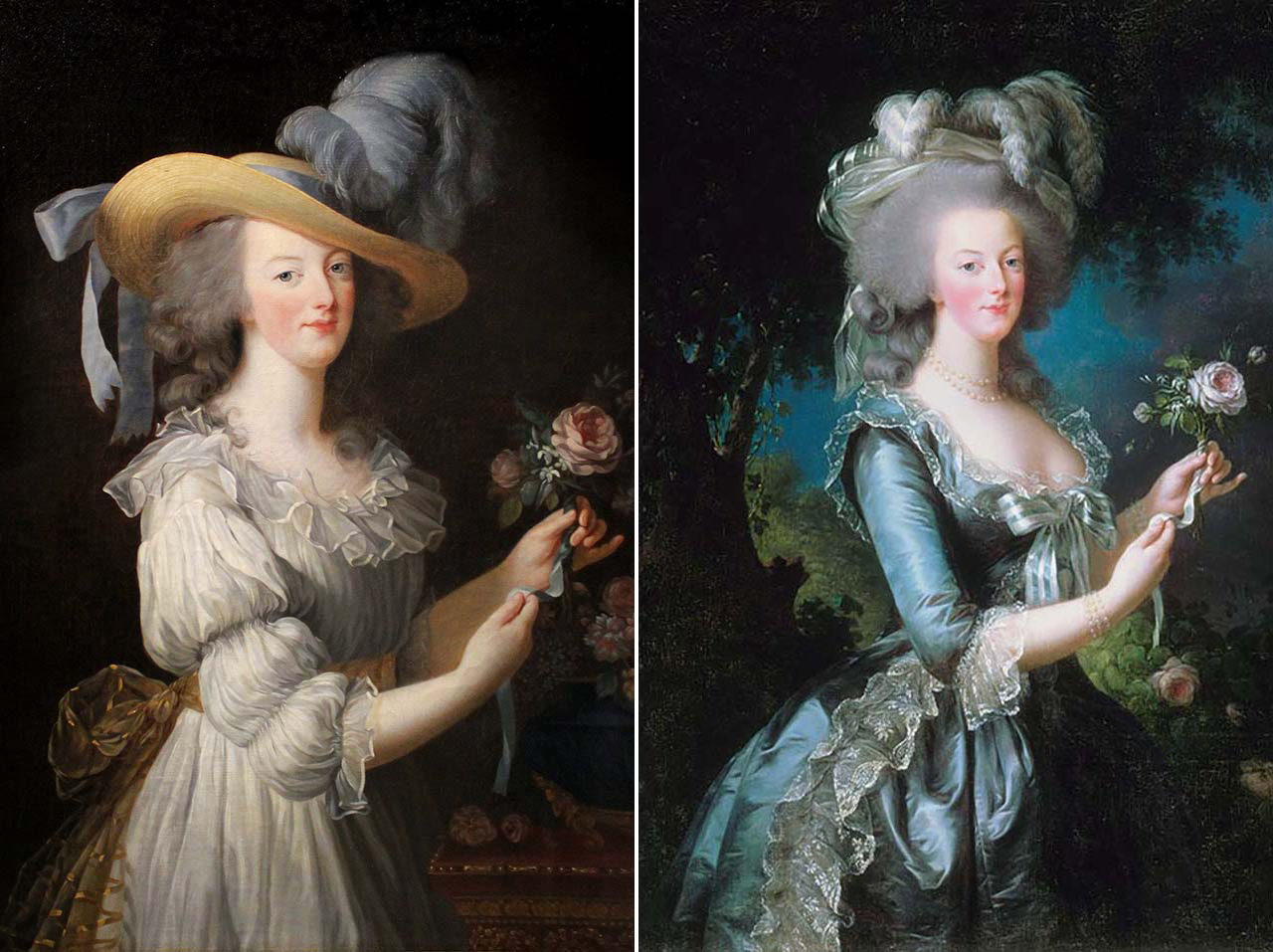
Marie Antoinette’s image didn’t just hang in gilded frames: It circulated, multiplied, and sold. Much like today’s content creators, she curated and shared her image widely. Bertin styled herself the “Queen’s Fashion Merchant” and often boasted of her “latest collaborations with Her Majesty.” With the queen’s blessing, she sold copies of gowns that had debuted at Versailles, though only after a two-week embargo. Life-size poupées de mode mannequins, modeled on the queen and dressed in replicas of her outfits, were shipped from London to St. Petersburg, spreading French style across Europe. Marie Antoinette also appeared in fashion plates for the proto-magazines Le Cabinet des Modes and Galerie des Modes, reaching audiences far beyond the French court. She was no longer just a monarch; she had become a marketable brand.
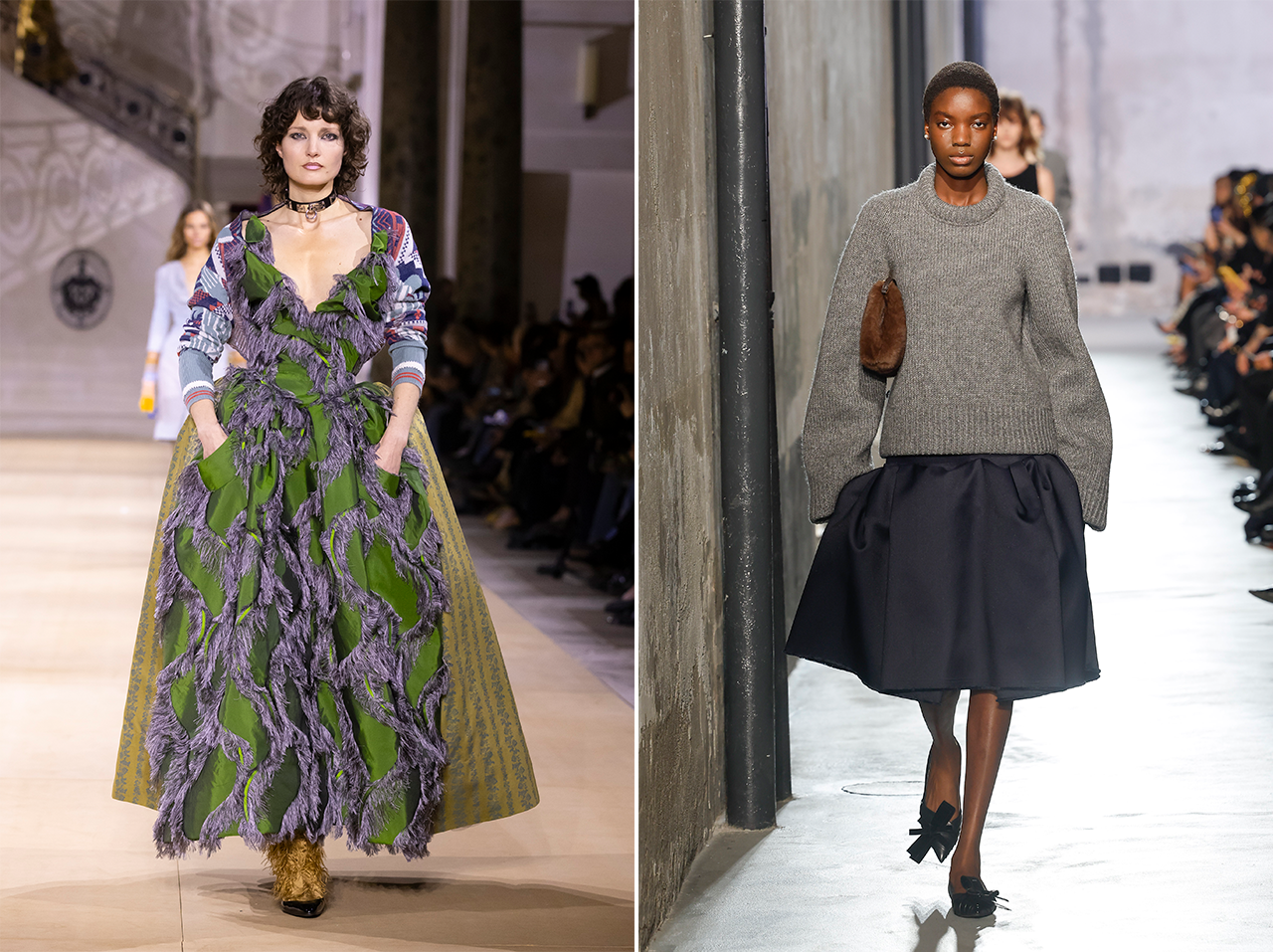
Photo: Courtesy of Vivienne Westwood and N21
From Jeanne Lanvin’s robe de style and Christian Dior’s New Look to the theatrical interpretations of Vivienne Westwood, John Galliano, and Karl Lagerfeld, Marie Antoinette’s style has returned to the runway repeatedly. Even now, more than two hundred years after the queen’s untimely demise in 1793, it makes a striking statement on the Fall/Winter 2025 catwalks. “Marie Antoinette invented a way of experiencing fashion that has remained unchanged over the centuries, opening the doors to today’s models, celebrities, and it-girls,” says N21 designer Alessandro Dell’Acqua, whose collection drew inspiration from the queen via Sofia Coppola’s 2006 biopic starring Kirsten Dunst as a Manolo-loving debutante. Sleek pencil skirts with oversized waist bows and a “swollen and disheveled” silhouette offered a modern take on 18th-century panniers and draperies.
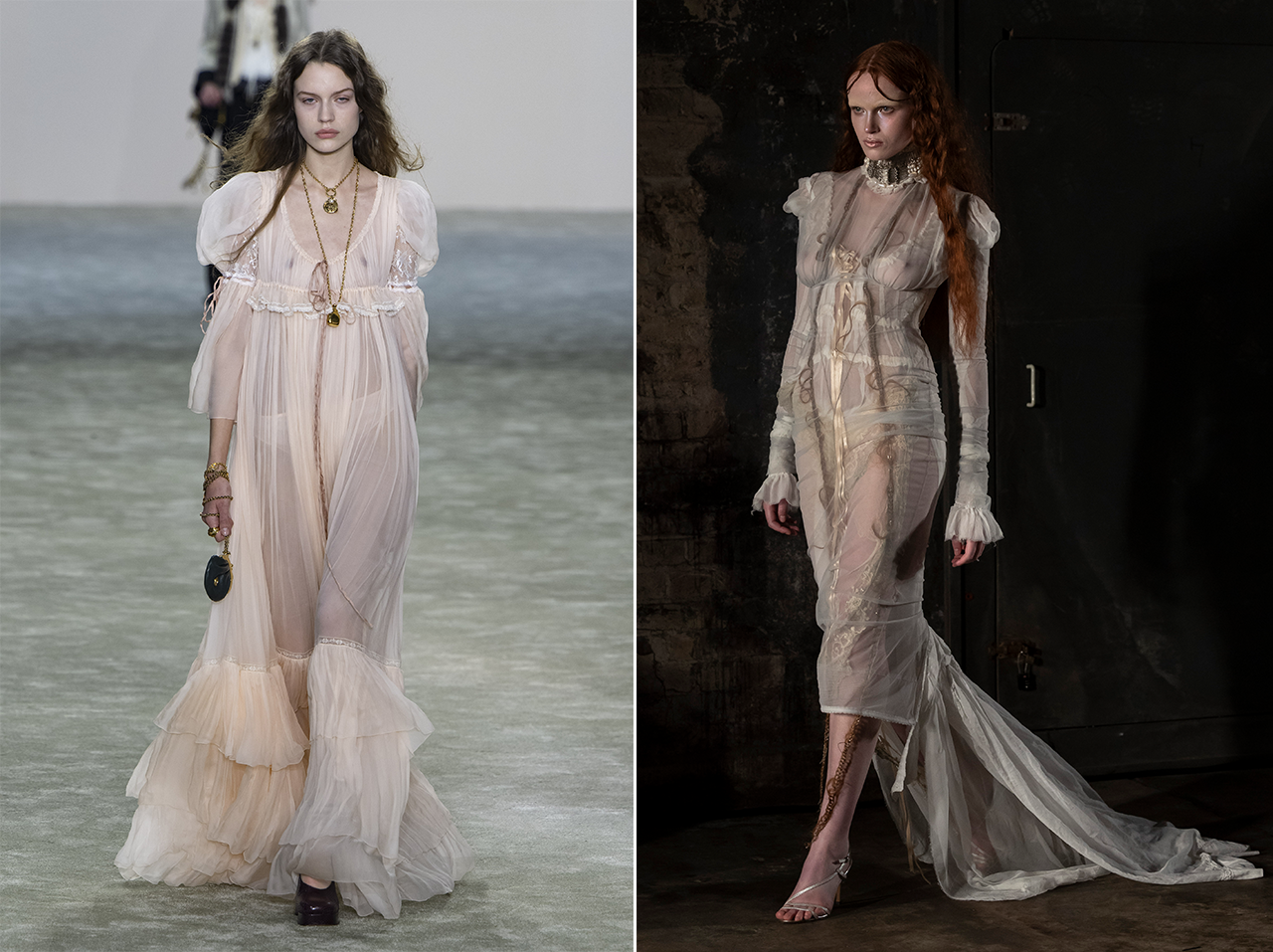
Photo: Victor Virgile/Gamma-Rapho via Getty Images, Courtesy of Dilara Findikoglu
“At its heart, Marie Antoinette’s appeal is about longing for fantasy,” says vintage style influencer Yulia Fomenko, who has never met a pannier she didn’t love. Clearly, she’s not alone in her desire: “Marie Antoinette’s signature looks, including corset tops, bubble and dropwaist skirts, bows, ribbons, and lace, are key elements in some of today’s most searched aesthetics,” says Sagal Mohammed, editorial lead for Google Shopping, noting that “white boho chic dress,” recently hit an all-time high. Search interest for waist-extending shapes tells a similar story: “crinoline” doubled and “rococo dress” jumped 170 percent in the past month.
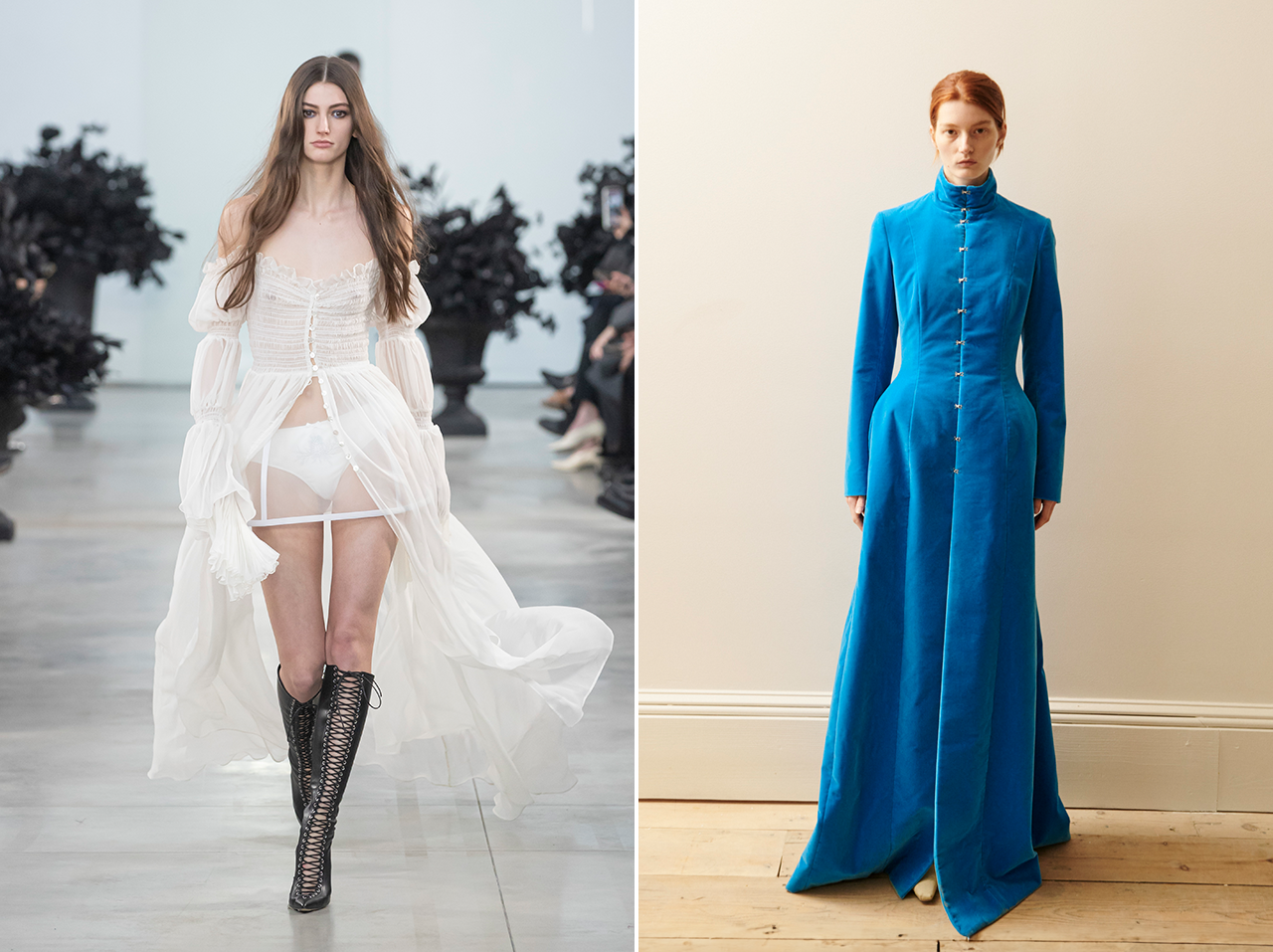
Photo: Courtesy of Blumarine and Colleen Allen
On the Fall/Winter 2025 runways, hybrids fuse the structured pannier with flowing boho silhouettes in white lace and mesh. Meruert Tolegen offers a crinoline pleated pannier dress, while David Koma’s naked pannier dress for Blumarine merges sculptural structure with soft, flowing lines to create a striking, modern silhouette he calls “a symbol of timeless volume and presence.” This season, designers are also exploring how architectural shapes can be adapted. Colleen Allen’s cotton-velvet coats feature removable tulle inserts at the hips, “creating a striking silhouette while remaining effortless to wear,” she says. Louis Vuitton proposes double hip-slung fanny packs, while Ottolinger offers tie-on hip pads.
Stylist Ana Tess highlights the DIY potential, recommending padded bike shorts, hip pads, or ruffled bloomers from Amazon to “pump up the volume” of a dress. She even bought a bean-shaped butt pillow from Zoe Gustavia Anna Whalen to add curvature under jackets. “I actually need to order a second one so I can tie them on both hips,” she says, underscoring that this iteration of Marie Antoinette mania is as playful as it is personal—an invitation to dream, just as the queen of fashion intended.














